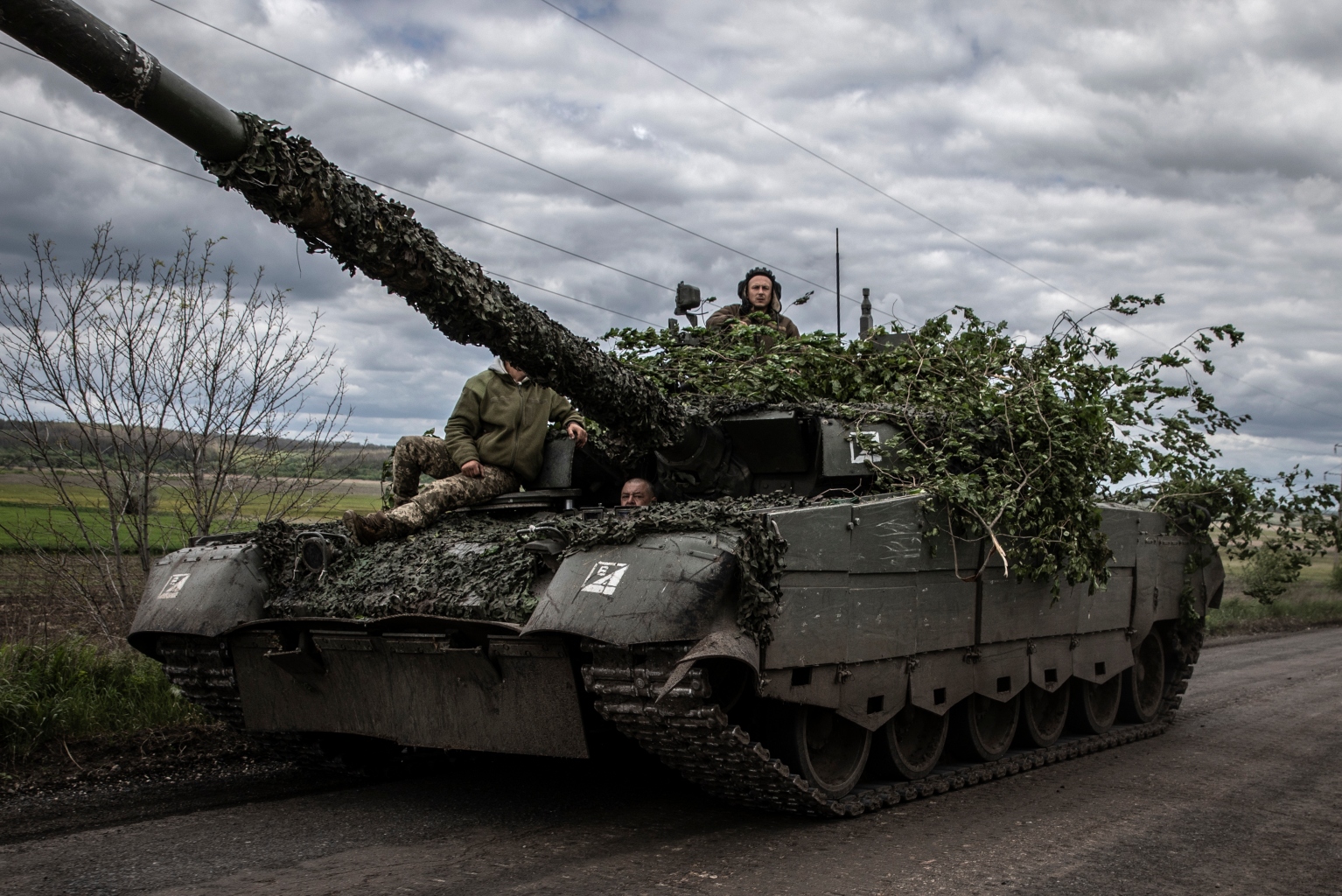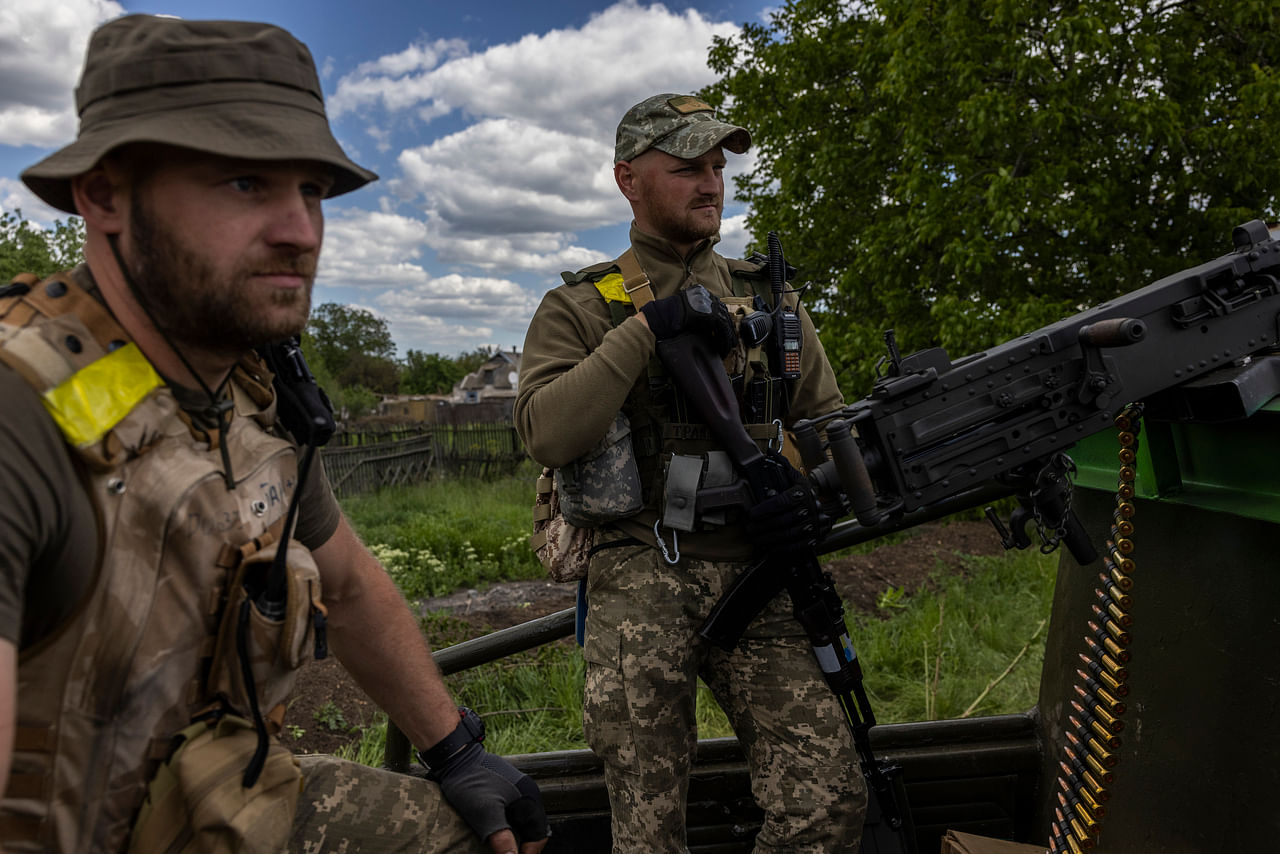The 'MacGyvered' weapons in Ukraine's arsenal
Sign up now: Get ST's newsletters delivered to your inbox

Ukraine has scored big successes in the war by employing the weapons and equipment in unexpected ways.
PHOTO: NYTIMES
Follow topic:
WASHINGTON (NYTIMES) - The billions of dollars in military aid the United States has sent Ukraine includes some of the most advanced and lethal weapons systems in the world. But Ukraine has also scored big successes in the war by employing the weapons and equipment in unexpected ways, and jury-rigging some on the fly, according to military experts.
From the sinking of the Moskva, Russia's Black Sea flagship, in April to the attack on a Russian air base in Crimea this month, Ukrainian troops have used American and other weapons in ways few expected, the experts and Defence Department officials say.
By mounting missiles onto trucks, for instance, Ukrainian forces have moved them more quickly into firing range. By putting rocket systems on speedboats, they have increased their naval warfare ability.
And to the astonishment of weapons experts, Ukraine has continued to destroy Russian targets with slow-moving Turkish-made Bayraktar attack drones and inexpensive, plastic aircraft modified to drop grenades and other munitions.
"People are using the MacGyver metaphor," said Mr Frederick Hodges, a former top US Army commander in Europe, in a reference to the 1980s TV show in which the title character uses simple, improvised contraptions to get himself out of sticky situations.
After six months of war, the death toll on both sides is high: Although US officials estimate that up to 80,000 Russian troops have been killed or wounded, Ukraine's outgunned military has said it is losing 100 to 200 troops a day.
Even so, the engineering ingenuity of the Ukrainians lies in stark contrast to the slow, plodding, doctrinal nature of the Russian advance.
In the attack on the Moskva, for example, the Ukrainians developed their own anti-ship missile, called the Neptune, which they based on the design of an old Soviet anti-ship missile, but with substantially improved range and electronics.
They appear to have mounted the Neptune missiles onto one or more trucks, according to one senior US official, and moved them within range of the ship, which was about 75 miles (121km) from Odesa.
The striking of the Moskva was, in essence, the Neptune's proof of concept; it was the first time the new Ukrainian weapon was used in an actual war, and it took down Russia's flagship in the Black Sea.
"With the Moskva, they MacGyvered a very effective anti-ship system that they put on the back of a truck to make it mobile and move it around," Mr Hodges, who is now a senior adviser at Human Rights First, said in an interview.
Ukrainian troops have done so well with the Bayraktar drone, in fact, that the company's CEO, Mr Haluk Bayraktar, praised their ability to "squeeze as much as possible out of these systems," in a recent interview with a Ukrainian news programme.
US military officials remain puzzled by why Russia's many-layered air defence systems have not been more effective in stopping the drones, which have no self-defence systems, are easily spotted by radar and cruise at only about 80 mph (129kmh).
A senior Pentagon official said Ukrainian forces had put American-supplied Harm anti-radiation missiles on Soviet-designed MiG-29 fighter jets - something that no air force had ever done.
The American Harm missile, designed to seek and destroy Russian air defence radar, is not usually compatible with the MiG-29 or the other fighter jets in Ukraine's arsenal.
Ukraine managed to rejigger targeting sensors to allow pilots to fire the American missile from their Soviet-era aircraft.
"They have actually successfully integrated it," the senior official told reporters during a Pentagon briefing. He spoke on the condition of anonymity per Biden administration rules.
Officials say the missiles can target Russian air defence systems up to 93 miles away.
The craftiness is now on display in Crimea. In recent weeks, Ukraine has targeted the Black Sea peninsula, which Russia illegally annexed in 2014, in a series of attacks.
In the strike on the Russian air base, Ukrainian forces destroyed eight fighter jets. A few days later, clandestine Ukrainian fighters operating behind enemy lines hit several sites in the occupied territory that Russia had thought were safe, including ammunition depots and supply lines.
Then, blasts hit a military airfield outside Sevastopol, the largest city in Crimea and home to Russia's Black Sea Fleet. Russia claimed that the booms from the strike were the sound of successful anti-aircraft fire.
"The Ukrainians are able to exploit their knowledge in the area," said Ms Dara Massicot, a senior policy researcher with Rand Corp.
This exploitation is rooted in Ukraine's history as the heart of the former Soviet Union's defence industry.
For decades, Ukraine was the place where the Soviet Union - and then Russia - developed turbines for warships, tanks and even aircraft, such as the Antonov An-124, one of the largest cargo planes in the world and used by Russia to transport weapons to Ukraine.

US military commanders who have worked with Ukrainian troops say the Ukrainians are always ready to improvise.
The attacks in Crimea underscore Ukraine's increasingly aggressive military tactics, as the government in Kyiv, Ukraine's capital, has relied on special forces and local partisan fighters to strike deep behind the front, disrupt Russian supply lines and counter Russia's advantages in arms and equipment.
US officials say the United States has provided detailed intelligence to help Ukraine's forces attack Russian targets throughout the war. But Ukraine conducted the first of the recent strikes in Crimea - a series of blasts at the Saki military airfield Aug 9 - without notifying American and other Western allies in advance, officials said.
Indeed, one US official later briefed on the attacks said Ukrainian commandos and partisan fighters had used an improvised array of weapons, explosives and tactics in the strikes.
"It's all homegrown," the official said, speaking on the condition of anonymity to discuss operational details. "We did not get any advance notice."

